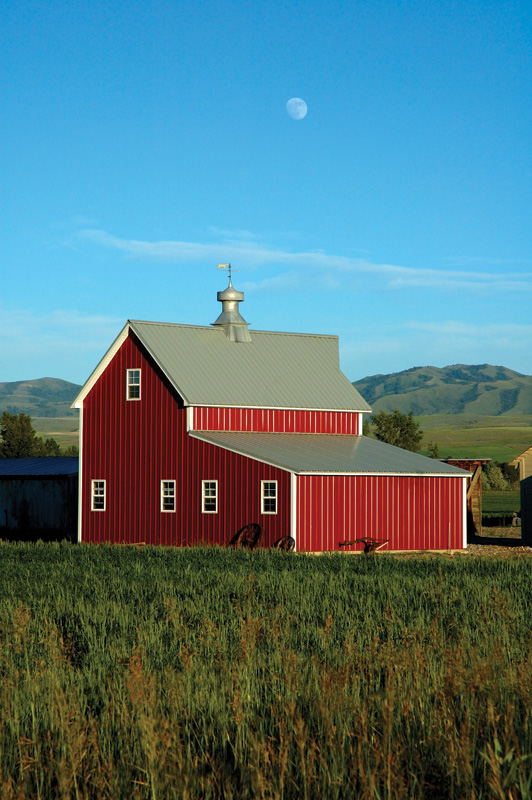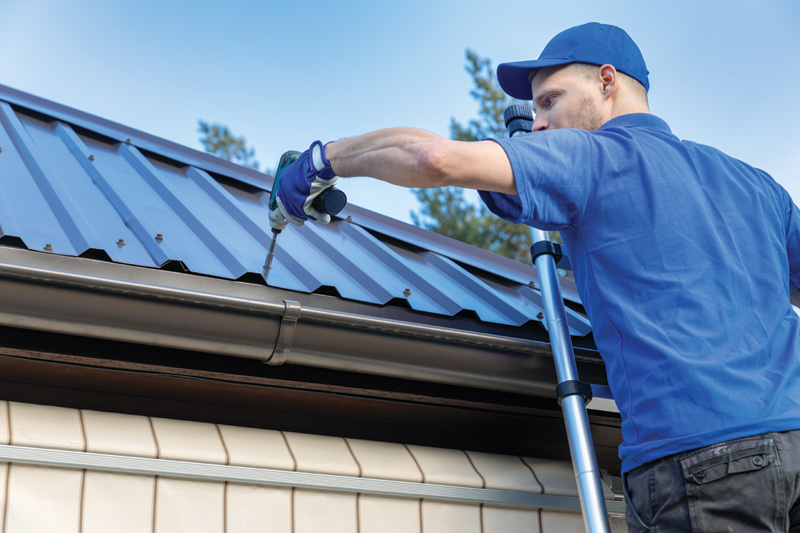
In the construction industry, professionals are constantly seeking innovative solutions to enhance the performance and longevity of building materials. Many times, they must consider how multiple materials work together to improve performance, longevity, and energy efficiency.
A building’s roof is no exception, and as the demand for renewable energy sources rises, the synergy between metal roofs and solar panels continues to offer a compelling case for combining the two in modern construction.
Solar roofing is not new, but it did not see mainstream adoption until 2010. According to the Solar Energy Industries Association (SEIA), solar roofing panels have seen an average annual growth rate of 25 percent in the last decade alone, representing a significant boom since the turn of the millennium.
Understanding the benefits of combining metal roofs with solar panels can lead to more informed decisions and better outcomes for residential construction projects, both for installers and homeowners. By leveraging advanced coatings technologies, metal roofs can achieve even greater performance, ensuring both the roof and solar panels withstand harsh environmental conditions without compromising on aesthetics or functionality.
Asphalt versus metal
Industry research reveals that asphalt shingles account for roughly 75 percent of roofing projects in the United States today, with metal roofing following behind at around 17 percent. Yet despite the dominance of traditional asphalt shingles, solar panels conform with a metal roof far better than its asphalt shingled counterparts.
Metals roofs are designed and warrantied to last more than 30 years. The same goes for solar panels. By comparison, traditional asphalt shingles on a roof traditionally last 15 to 20 years on average.
The discrepancy in product lifespan presents a construction challenge for homeowners with solar panels on an asphalt roof, as the lifespan of the solar panels often exceeds that of the shingles.
Eventually, this situation frequently necessitates the removal and reinstallation of the solar panels once the asphalt roof needs to be replaced, incurring additional costs for new roofing materials, labor, and the reinstallation of the solar panels.
Addressing the challenges
The primary construction challenge when using asphalt shingles with solar panels is the need to perforate the roof to attach the steel brackets that are used to support the panels. By puncturing the building envelope, it becomes more susceptible to moisture intrusion and potential damage to the substrate and beyond. For this reason, using solar panels on an asphalt roof requires robust sealing methods to prevent leaks and maintain the roof’s integrity, which can be a challenge.
Metal roofs offer a more seamless solution. Metal roofs, especially those with standing seams, allow for the attachment of solar panels without penetrating the roof’s surface. This method helps to preserve the roof’s integrity and ensure a longer service life compared to asphalt shingles.
In addition, the warranties included with metal roofs and solar panels are more closely aligned. While asphalt shingles may come with a 30-year warranty, their actual service life often falls short of that. A metal roof, especially one finished with high-performance coatings, is more equipped to match the longevity of solar panels, ensuring consistent performance over time. The two materials combined offer an integrated system with expected lifespans that more closely match.
Enhancing metal roofs with advanced coatings
Coatings are designed to enhance the lifespan, appearance, and long-term performance of metal products.
Many solar panel manufacturers protect their products with the same coatings for use on metal roofing panels. This ensures the aesthetics and performance of both materials remain consistent throughout the life of the roofing system, offering UV stability and long-term durability. This ensures the solar panels and the roof beneath them can withstand harsh environmental conditions without degrading in appearance or function.
These coatings have been tested to meet FGIA 2605 standards, the highest architectural specifications with strict performance requirements. Coatings meeting these specifications are 70 percent fluoropolymer resin-based, the very same resin system used on solar panels.
These coatings provide excellent weather and corrosion resistance, essential for these types of roofing systems using primarily metal materials. Creating a plastic-like protective layer, the coatings prevent corrosion and maintain the color integrity of the metal substrate. The coatings are designed to not chalk or color shift and offer critical flexibility that accommodates the natural expansion and contraction of metal roofs without cracking or breaking. This is particularly critical in warm, sunny climates in the southern and southwestern United States.

New heights with metal roofs and solar panels
Choosing a metal roof for a solar panel installation offers significant advantages in terms of longevity, performance, and energy efficiency compared to traditional asphalt shingles. To further bolster the roofing system, advanced coating technologies can be incorporated. They play a pivotal role in ensuring the benefits are maximized, making these coatings the preferred choice for metal roofs supporting solar installations.
Ultimately, it is critical to mount solar panels on a foundation that will last as long as they are designed to. Metal roofs with high-performance coatings are the ideal option with long-term service that is proven. Metal panels are both flexible and modular, allowing for the integration of a portion of solar panels on the roof (with the option to add more later) or a future home addition.
The construction industry is increasingly prioritizing sustainability, focusing on everything from eco-friendly materials and carbon footprint reduction to energy-efficient product lifecycles. With the rising popularity of solar panels and metal roofs, especially in residential construction, unlocking their full potential hinges on the advanced material science behind today’s
high-performance coatings.
References
U.S. Roofing Market Size & Share | Industry Analysis 2032 (expertmarketresearch.com)
Residential Metal Roofing Continues to Make Strong Gains in U.S., According to Latest Industry Report
Gary Edgar has been the national architectural specification manager for PPG’s building products in North America for 25 years. He is an active member of industry associations including AEC, FGIA, AAMP, and MCA. His responsibilities include product and specification recommendations, application recommendations, and product training to the specification community. Edgar is also responsible for PPG’s coil, extrusion (powder/liquid), and ADS warranty approval and is an AAMP/NACE-certified coating inspector.


